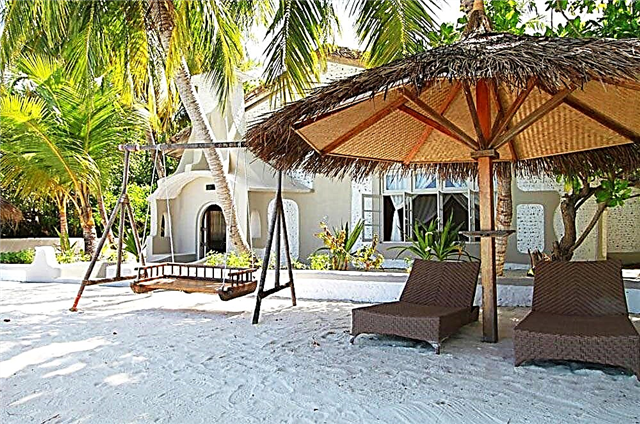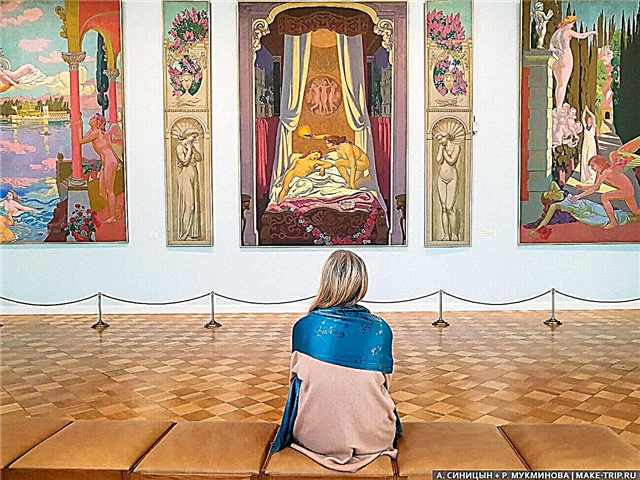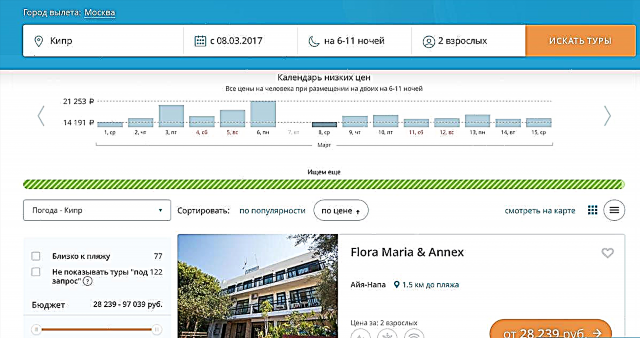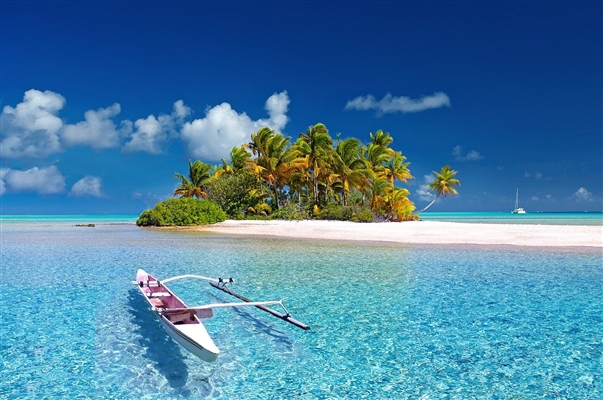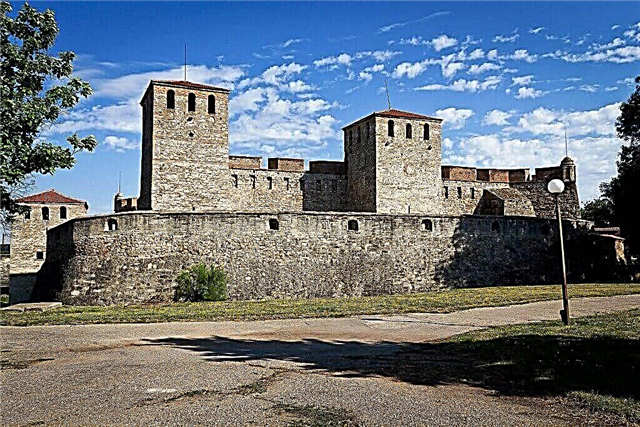Bulgaria is a state with modern infrastructure for resort recreation. But this country has much more to offer travelers, for example, a historical destination exploring the architecture of past centuries. Bulgaria has not always been independent. Its territory was ruled by the Romans, Thracians, Huns, Ottomans and other peoples.
They left behind many fortresses. And the local population had to build defensive redoubts, some of which have survived to this day. Some are in ruins, like Urvich, while others, for example, Belogradchik, have become museums. Tsari-Mali-Grad deserves special mention. This fortress was named the main attraction of the country in 2013 by the majority of Bulgarians.
The most interesting castles and fortresses in Bulgaria
List, photos with names and descriptions of medieval castles!
Tsarevets
Dated to 1185. It is located in Veliko Tarnovo on the hill of the same name. Since the city was then the capital, the fortress was given under the residence of the royal nobility. During the siege at the end of the 14th century, some of the fortifications and buildings were damaged. Reconstruction began only in the 30s of the last century. Now a light and music show is being held in the fortress, telling about the fall of the Bulgarian kingdom.

The meal
The fortress of Veliko Tarnovo was first mentioned in 1195. 18 churches were built in the vicinity. The fortress was destroyed in 1363. Only half a millennium later, researchers began to explore this territory. Numerous excavations have helped to recreate the architectural plan of Trapezitsa. In our century, restoration work has begun, with the aim of turning the fortress into a historical monument and a tourist site.

Ravadinovo
The initiator of the construction of the castle was Georgi Tumpalov. He is the owner of the territory and is fully responsible for the project, which has not yet been completed. The complex is stylized to look like a medieval castle. The construction used marble limestone and stones brought from Turkey. There is a small zoo in Ravadinovo, there is a lake and ponds with fishermen. Various excursion programs have been developed, a quest and wine tasting are available.

Baba Vida
Belongs to the city of Vidin and stands on the banks of the Danube. The only fortress of the medieval period on the territory of the country, which is well preserved. Although Baba Vida is dated to the 12th century, its present appearance was formed much later. After losing its defensive significance, the fortress became an arsenal and a prison. In 1958, a museum was organized inside. Tourists are invited to see the walls, 4 towers and a small exhibition.

Belogradchik
The fortress also has another name - Kaleto. The first fortifications appeared here during the period of Roman rule. In the XIV century, the territory was expanded, the area was more than 10 thousand square meters. The walls are 2 meters thick and up to 12 meters high. In the last century, Belogradchik was restored. The exposition of the local history museum is partially located inside. In addition, the fortress was given the status of a national monument.

Buttercup
Built 5 km from Ivaylovgrad. Alternative names are the Kaloyan Citadel and the Marble City. The medieval fortress has been preserved fragmentarily. Its ruins are oval in shape. The height of the walls reaches 10 m, and their length is about 600 meters. The artifacts found here during excavations are housed in the city museum. The researchers also dug up the foundations of two churches, the keep and the remains of the sewage system.

Assenov fortress
Located in the Rhodope Mountains on the left bank of the Chepelarskaya River. It began as a small tower, gradually fences and related outbuildings were added to the fortress. The height of the walls reached 12 meters. The temple of the Assumption of the Blessed Mother of God is well preserved. The inside of the church is decorated with frescoes from the 14th century. In 1991, after excavations and restoration, the fortress became a cultural monument.

Kaliakra
It is located on a rocky promontory near the Black Sea. The fortress was built in the 15th century, and gained fame in 1791. Then the fleet of the Russian Empire defeated the Turks. Subsequently, a lighthouse and windmills were built nearby. During recent excavations, a pot of coins and jewelry was found under the floor of a room that was burned down in the 14th century. The territory of Kaliakra is part of the protected area.

Tsari-Mali-Grad
One of the main attractions in Bulgaria. Dated to the 4th century. Located on the Mount of the Holy Savior. Several mineral springs can be found nearby. In 2013, the fortress was opened to the public after reconstruction. The museum collection tells about all the peoples who owned these lands: Thracians, Romans, Goths, Bulgarians. Exhibitions of ceramics, coins, household items, military history are open.
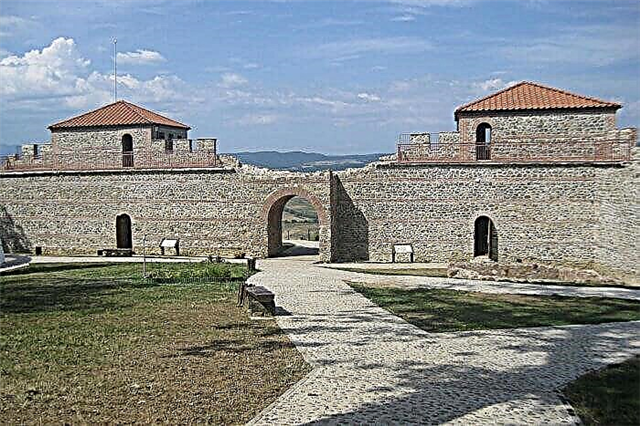
Sheep
In this area, fortifications stood in the 7th century. To Varna from here 53 km. The fortress flourished in the XII-XIV centuries. The owners of the defensive structure changed, and with them the name: Provat, Ovech, Tash-Hisar. The fortress has 3 entrances, the steps are carved right into the rocks. Tourists are attracted by: one of the stairs, in which there are 111 steps, a church, a knight's dungeon, Monastic "holes".

Hisarya
The main attraction of the city of the same name. The location on the terraced hill gave the fortress additional opportunities in terms of protection. The length of the walls is almost 2,200 meters, the height is up to 11 meters. They are partially preserved, as are 2 of the 4 gates. In Hisar, a document on the independence of Bulgaria was signed in 1187. Since 1967, the ruins have had the status of an architectural monument of national importance.

Sostra
The remains of the fortress have been preserved near the town of Lomich. Due to the construction near the road, the fortified military camp was of strategic importance. During the excavations, traces of three different fortresses were found, the first one dated to 147. When Sostra was destroyed by the Huns in the 5th-6th centuries, it was already uninhabited. Now, in the warm season, archaeological camps for young people are organized on the territory of the fortress.

Castra Martis
Ruins occupy the central part of the city of Kula. The construction was carried out in several stages. The fortress is divided into two parts: the quadriburge and the castel. The raids of the Goths and Huns led to the destruction of walls and internal buildings in the 4th-5th centuries. The local museum displays dishes, coins, clay lamps and tools found during excavations. There is an observation deck in Castra Martis. In the evening, the territory is highlighted.

Cherven
The fortified city is located 30 km from Ruse. It is surrounded by the Rusenski Lom Natural Park. Cherven flourished in the 14th century. A little later, the fortifications and related buildings were destroyed by the Turks. Archaeological excavations helped to understand how important the fortress was in the life of the region. The remains of 13 churches, underground communications, and numerous dwellings were found. It has been an architectural reserve since 1997.

Mezek
The fortress was built by the Byzantines in the 11th century. It is only a kilometer from the Greek border from here. The area of the territory is 0.7 hectares. Mezek performed defensive functions until the end of the 14th century. Until 1900, the buildings were practically intact. Then part of the walls made of chopped stones were dismantled for the construction of barracks in one of the nearby towns. Restoration work was carried out. The latter ended in 2007.

Shumen
The distance from the fortress to the center of the city of the same name is about 3 km. The first fortifications were built here by the Thracians. Shumen was repeatedly captured, destroyed, burned and rebuilt again. Interest in it disappeared after 1444, when the troops of Vladislav III caused irreparable damage to the fortress. During the excavations, many artifacts were found, which were scattered throughout the exhibitions within the country. The ruins have been converted into an open-air museum.

Mejit Tabia
Built in the middle of the 19th century.The purpose was to strengthen the defensive line, because then the border of the Ottoman Empire passed along the Danube. Since the fort belonged to the Turks for some time, it has another name - Abdul Majidi. The height of the bastions is about 8 meters. The exterior and interior have been preserved in their original form. This makes the fortress unique: there are no other similar buildings of this period in Bulgaria.

Anevo
Built during the reign of Emperor Justinian I in the 6th century. It was of great military importance and was one of the largest in the region. The location on a hill gave an advantage when viewing and resisting a siege. Now, against the backdrop of rocky outcrops, the ruins of Anevo are barely distinguishable. The towers, whose height reaches 12 meters, the foundations of the churches and part of the wall on the west side, have been partially preserved.

Urwich
The ruins of the fortress are located on the slopes of the Lozen Mountains. Much of the data associated with this structure remains inaccurate. The fortress is dated around the 13th century. The fortification played an important role during the Turkish invasion. Urvich was destroyed after a long siege at the end of the 14th century in order to get close to Sofia. Since then, there have been no attempts to reconstruct it. The Kokalyansky monastery is located nearby.

Krakra
From the once monumental building of the 9th century, only fragments of the foundation and walls now remain. In the past, eminent guests came here, like Peter I, whose seal was found during excavations. The fortress was no longer used after the third crusade. Krakra is declared a monument of history and culture. In the vicinity you can find not only tourist groups, but also the residents of the nearby town of Pernik.


